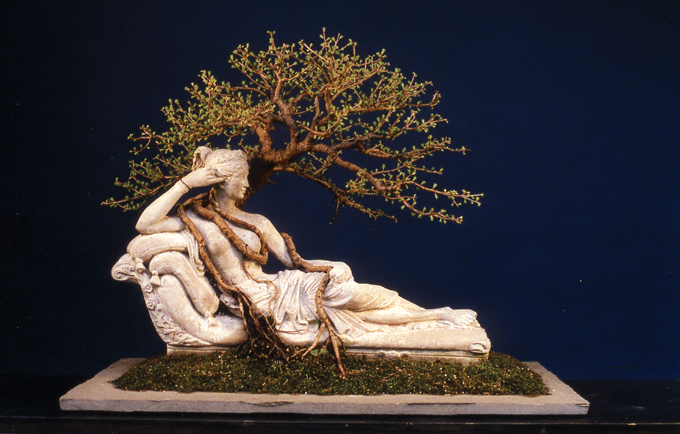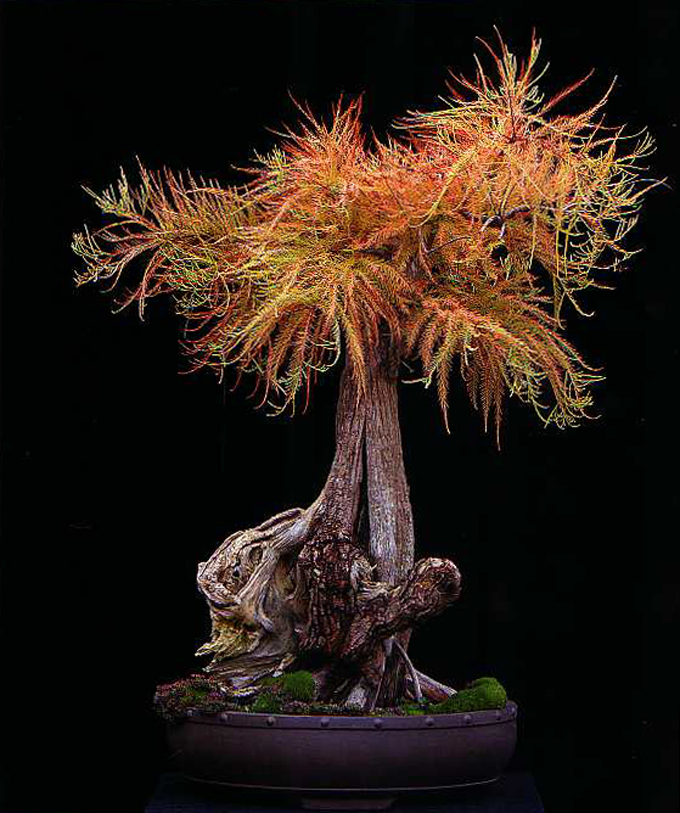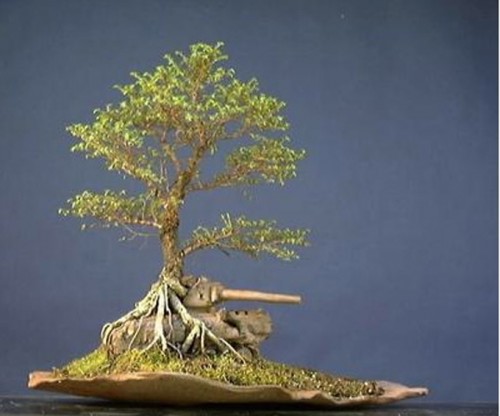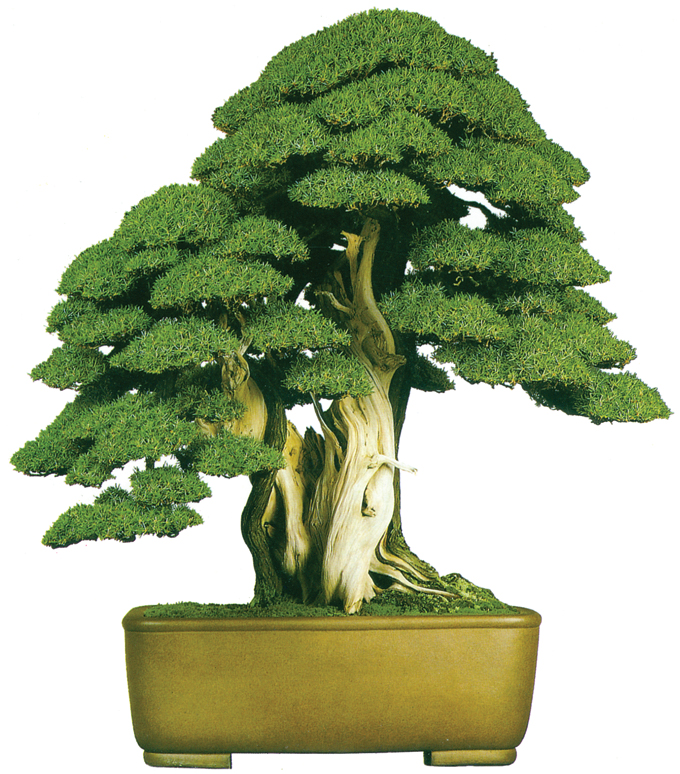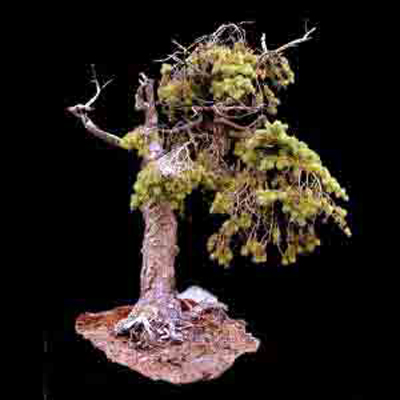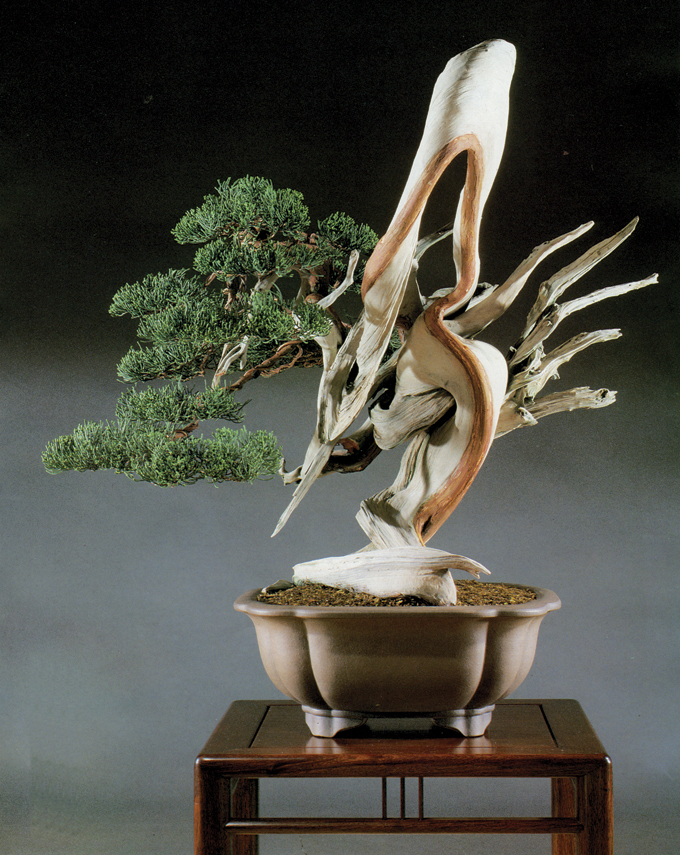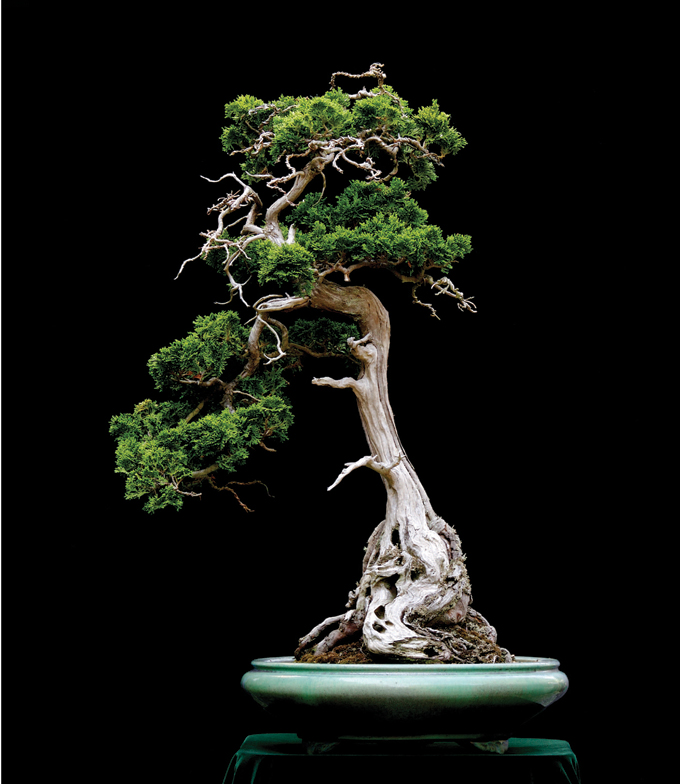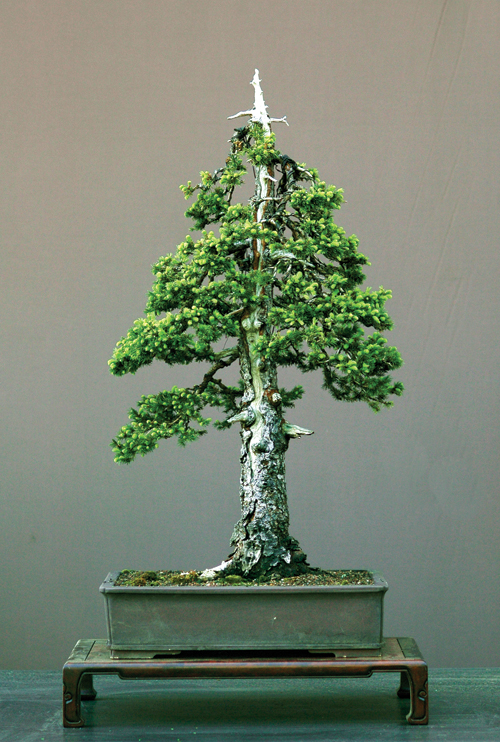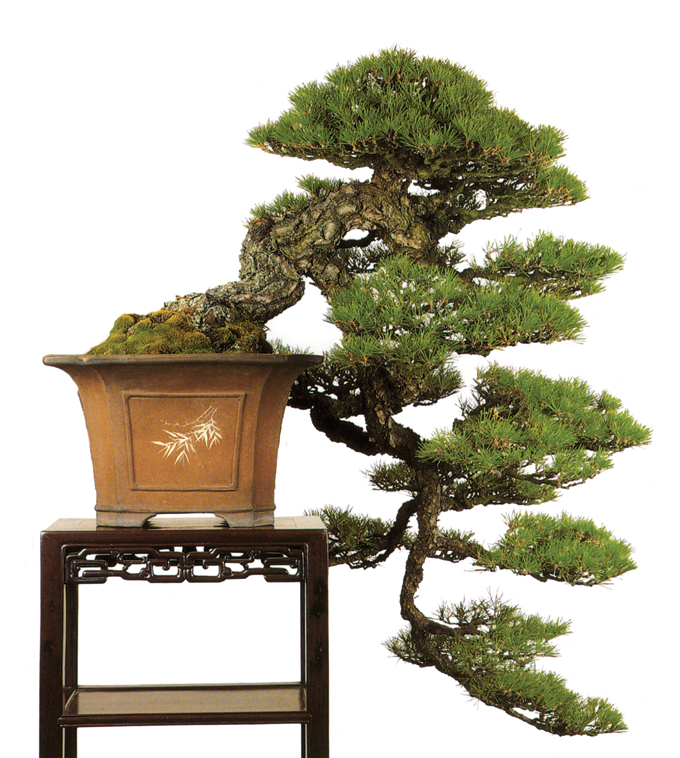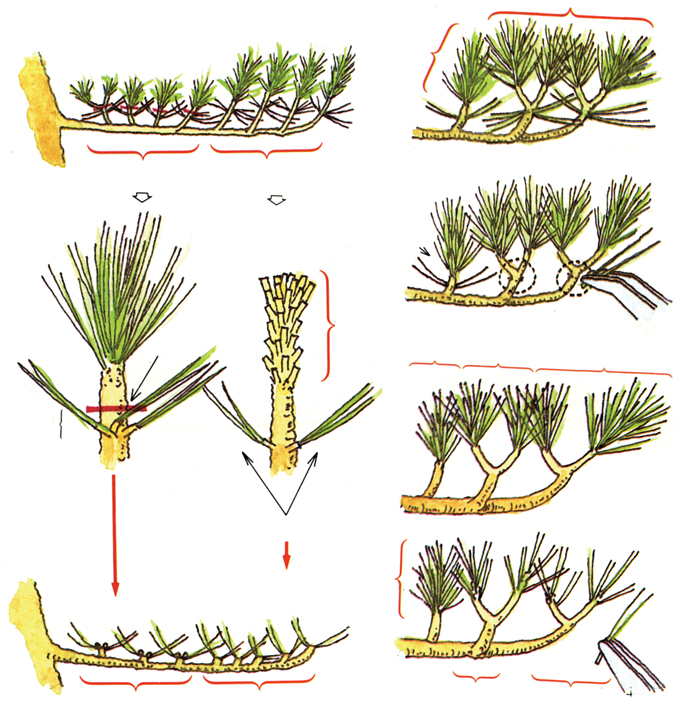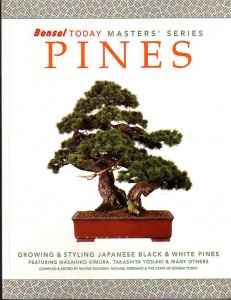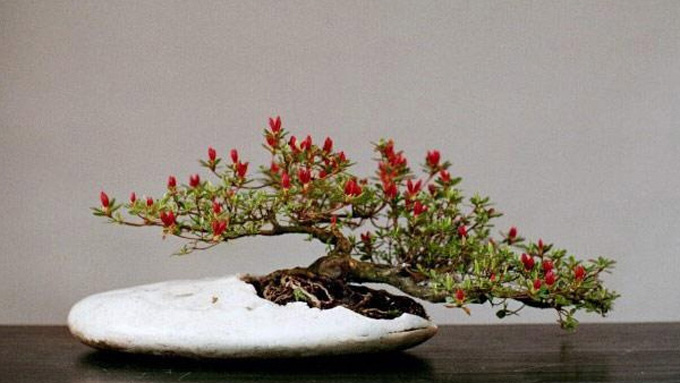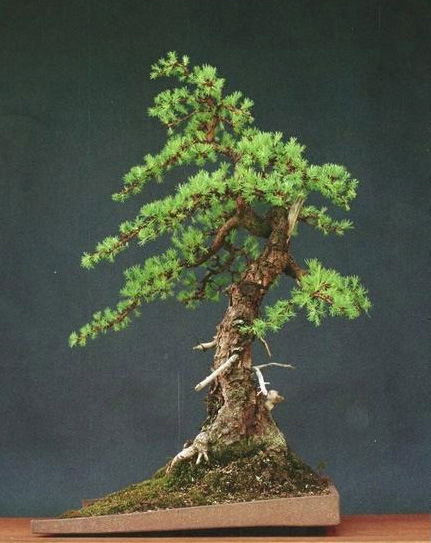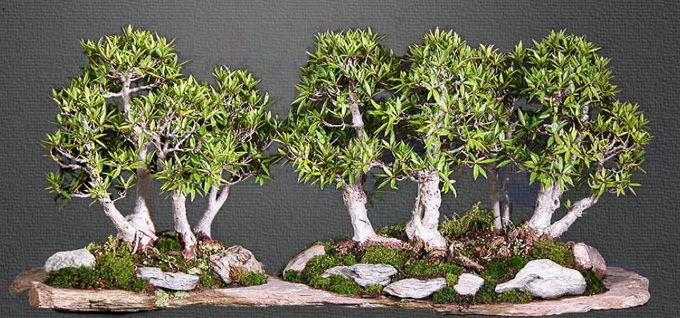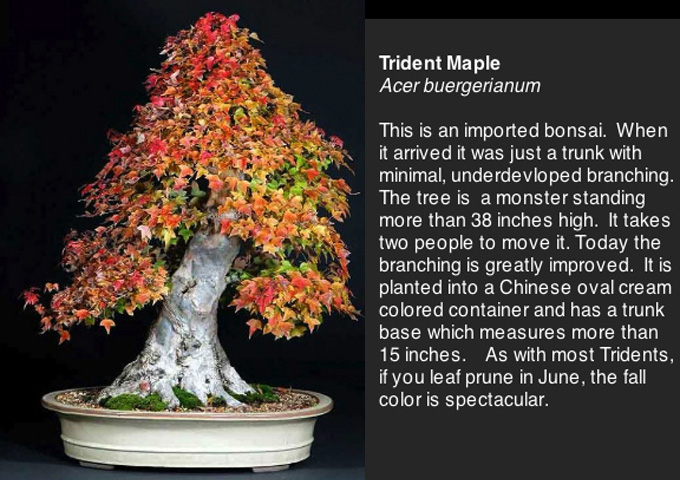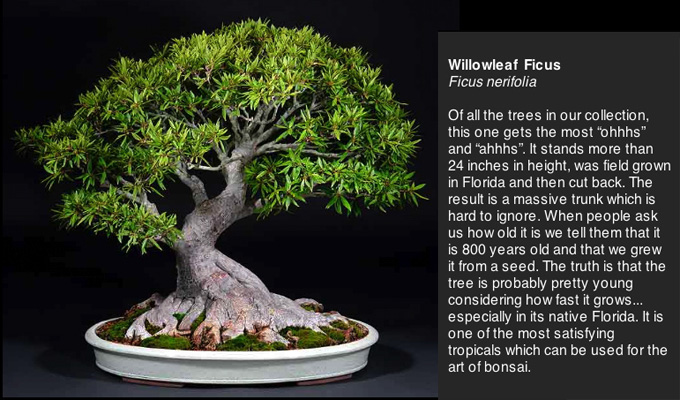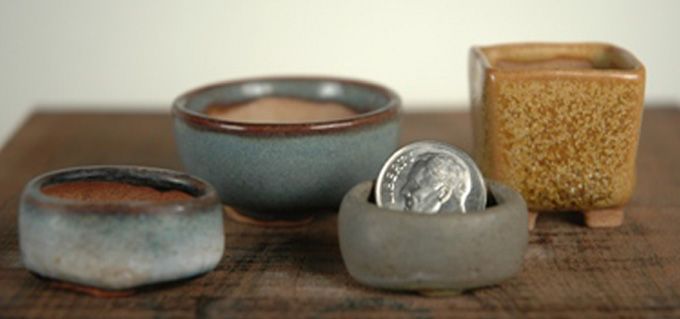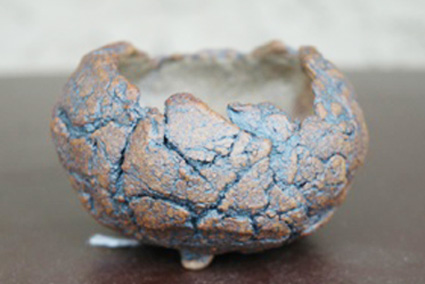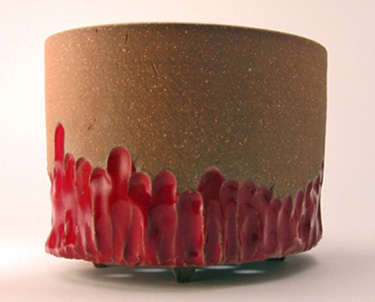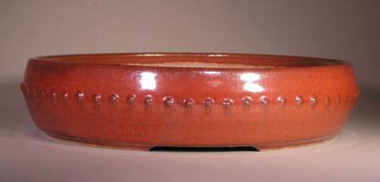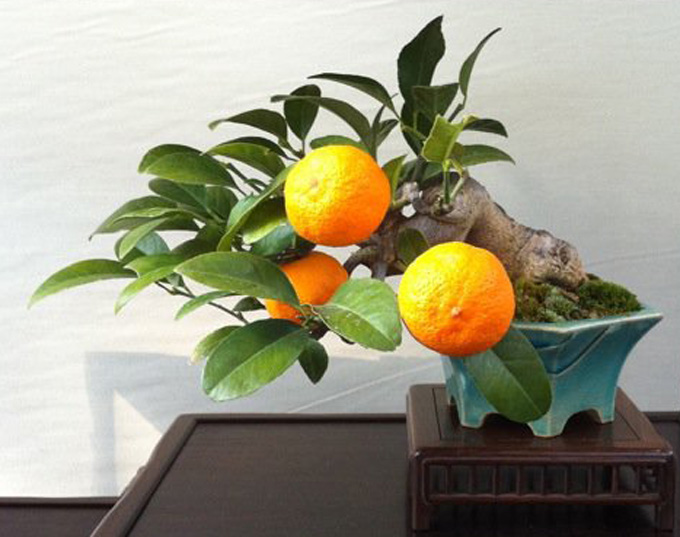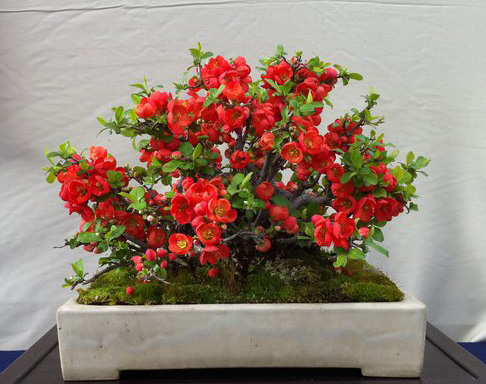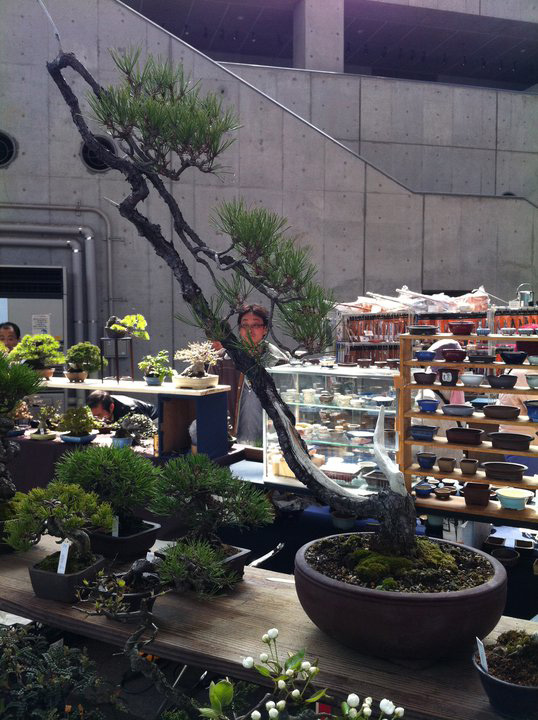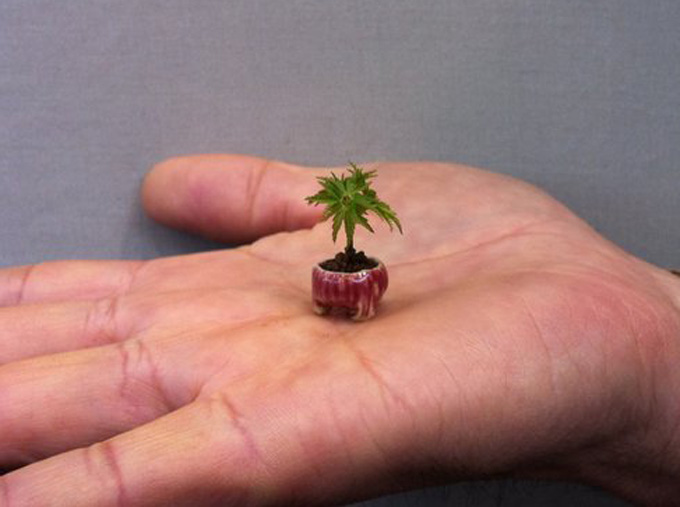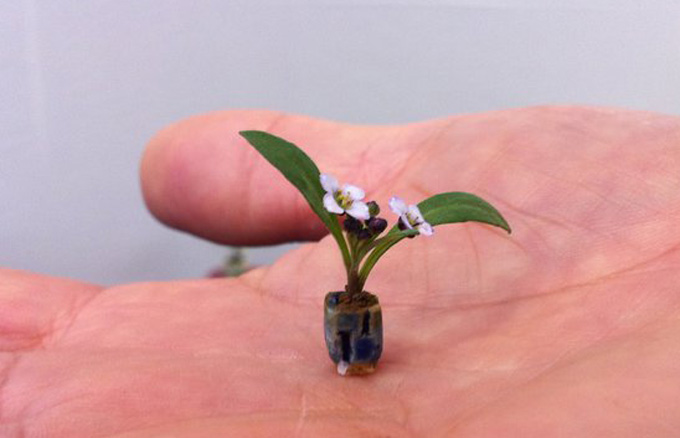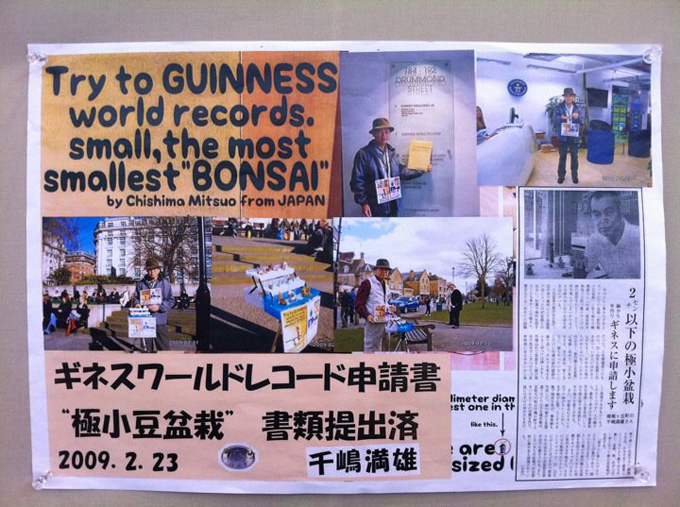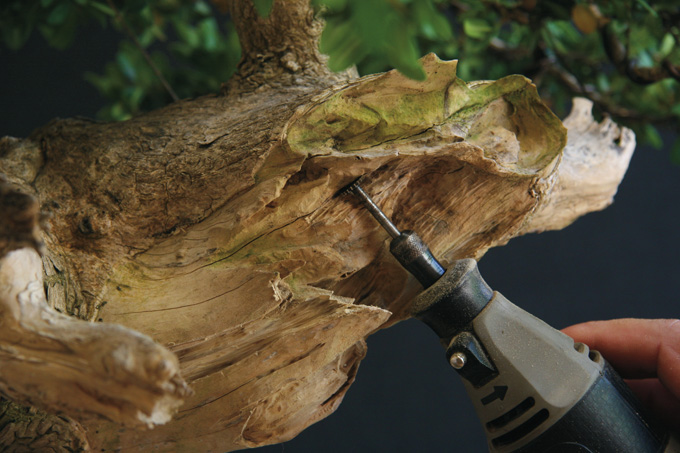 Francios Jeker‘s finger and dremel power carving tool. From Bonsai Today 105 (still available).
Francios Jeker‘s finger and dremel power carving tool. From Bonsai Today 105 (still available).
It didn’t used to be this way
Have you noticed how almost everybody carves deadwood these day? It wasn’t always the case. I just thumbed through Kyuzo Murata‘s classic Four Seasons of Bonsai (first edition 1991 and long out of print) and could find only 3 or 4 bonsai that had some carving (out of over 100 trees). The same goes if you look back through other older bonsai publications.
New horizons
Even though it’s overused, carving opens up whole new horizons for us bonsai hackers, so that’s a good thing. The problem is, many of us go ahead and carve without knowing much about it. This ignorance puts our trees at risk in at least two ways: health and beauty (a hack job is worse than no carving at all). My suggestion: pay attention to people like Cheng, Cheng-Kung and Francios Jeker, start with hand tools, and take your time.
Western deadwood maven
A long time ago I promised you some more photos of Francois Jeker’s carving from Bonsai Today issues 103, 104 & 105 (unfortunately the printer shorted us on 103 and 104, so they are long gone). Thank you for your patience (not that a single one of you remembers). BTW: our post on natural aging (below) by Francois is particularly enlightening.
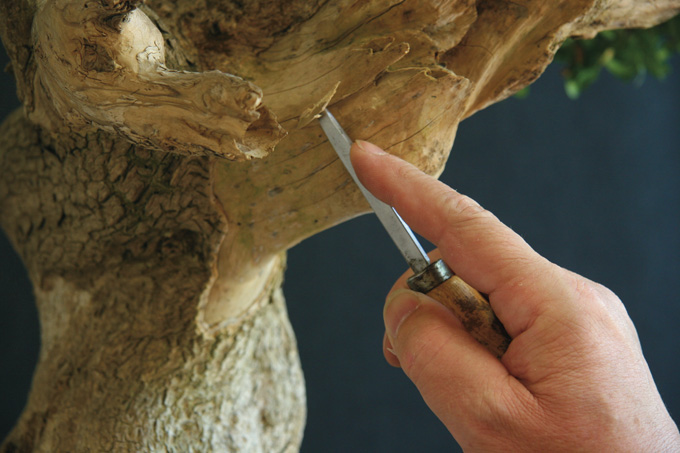 Francois hand and a simple hand carving tool. From Bonsai Today issue 105.
Francois hand and a simple hand carving tool. From Bonsai Today issue 105.
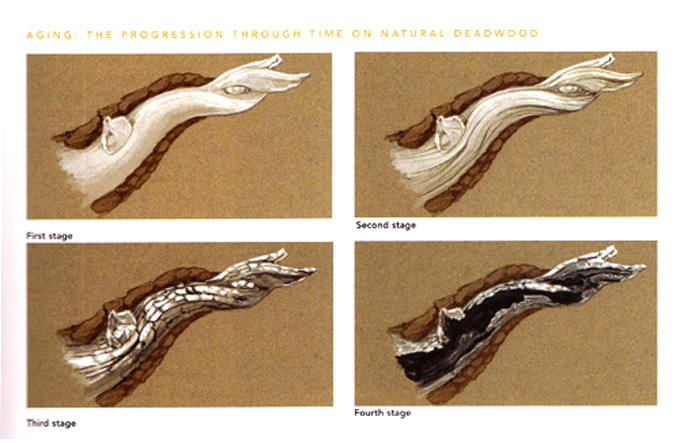 Francois Jeker’s illustrations on natural aging of deadwood. Originally from Bonsai Today issue 103 and later featured here.
Francois Jeker’s illustrations on natural aging of deadwood. Originally from Bonsai Today issue 103 and later featured here.
All remaining back issues of Bonsai Today are now 52% off.
